Authentic Mexican Marranitos (Piggy Pan Dulce)
3
Published Dec 18, 2024
This post may contain affiliate links. Please read our disclosure policy.
If adorably whimsical sweets make you smile, you need to try these deliciously authentic Marranitos recipe! These cute Mexican gingerbread pigs, also known as cochinitos or puerquitos, are delightfully spiced—perfect for any cool-weather baking adventures.

Marranitos cookies were my grandma Jesusita’s favorite pan dulce, or “sweet bread,” so I always make them for our Dia de los Muertos ofrenda to let her know I’m thinking of her. But, these soft and cakey treats have become such a favorite in our community I also make several batches for my Mexican Christmas cookie platters—molasses and spice are perfect holiday flavors!
These traditional Mexican treats aren’t just charming; they’re also a snap to make! All you need are 11 basic pantry ingredients and the help of a piggy cookie cutter. Ready to bake up some warmly spiced goodies? ¡Vamos a la cocina!
Table of Contents
- What are Marranitos?
- Why You’ll Love This Piggy Pan Dulce Recipe
- Ingredients & Substitutions
- How to Make Marranitos Cookies
- Optional Variations
- Serving Suggestions
- Expert Tips & Tricks
- Storage Instructions
- Frequently Asked Questions
- More Mexican Pan Dulce Recipes
- Marranitos / Cochinitos / Puerquitos (Mexican Pig-Shaped Cookies) Recipe
What are Marranitos?
Marranitos are pig-shaped spice cookies that are often referred to as “Mexican gingerbread.” While the name isn’t too far off the mark, cinnamon and ginger act more like supporting actors—classic marranitos get most of their delicious spicy-brown flavor from molasses and the traditional Latin American unrefined brown sugar known as piloncillo.
They are rich and oh so gratifying. In fact, I love them so much, this recipe is featured in my newest cookbook, Fiestas. Their cake-like texture is reminiscent of a lightly spiced, extra moist shortbread—sort of like British-style gingerbread.

Why You’ll Love This Piggy Pan Dulce Recipe
- Despite having deep Mexican roots, these cozy treats are made using only simple pantry staples, making the recipe accessible to any home cook.
- Puerquito pan dulce is always a crowd-pleaser—it’s impossible not to smile when you see these cute gingerbread piggies!
- Making cookies is a great way to get kiddos involved in the kitchen, especially when they’re cut-outs.
Ingredients & Substitutions
The complete list of ingredients, quantities, and instructions can be found in the printable recipe card below.
- Piloncillo – This special type of sugar (similar to jaggery) is usually sold in a cone shape and is easy to spot at any Latin supermarket. Feel free to swap in dark brown sugar if needed.
- Butter – I typically use butter because I think the flavor is better, but you’re also welcome to use shortening, which offers a softer consistency and less spreading. Or, use half and half for the best of both worlds!
- Large Egg – Make sure to let it come to room temperature to make it easier to mix into the dough.
- Milk – Any variety of dairy or unflavored plant-based milk should do the trick.
- Vanilla Bean Paste – Using the paste will give you pretty little flecks of black, but vanilla extract (preferably made from Mexican vanilla) can be used instead.
- Baking Soda – Not to be confused with baking powder, this ingredient helps our little piggies rise to the occasion.
- Ground Cinnamon & Ground Ginger – These two spices combine to add a lovely warmth to our puerquitos pan dulce.
- Molasses – This bittersweet byproduct of sugar production adds moisture and a rich flavor. I recommend using regular unsulfured molasses over more bitter blackstrap.
- Honey – I like to soften the sharp edges of molasses by supplementing with sweeter honey. Feel free to swap in agave nectar or maple syrup if needed.
- All-Purpose Flour – Regular white flour is all you need! Make sure to use the spoon and sweep method of measuring to prevent your marranitos bread from tasting too dry.
How to Make Marranitos Cookies
This pig pan dulce recipe is a snap to make. Here’s how it’s done:
Step 1: Beat butter and piloncillo together in a large bowl until combined (they won’t really cream together, just beat as best as you can).
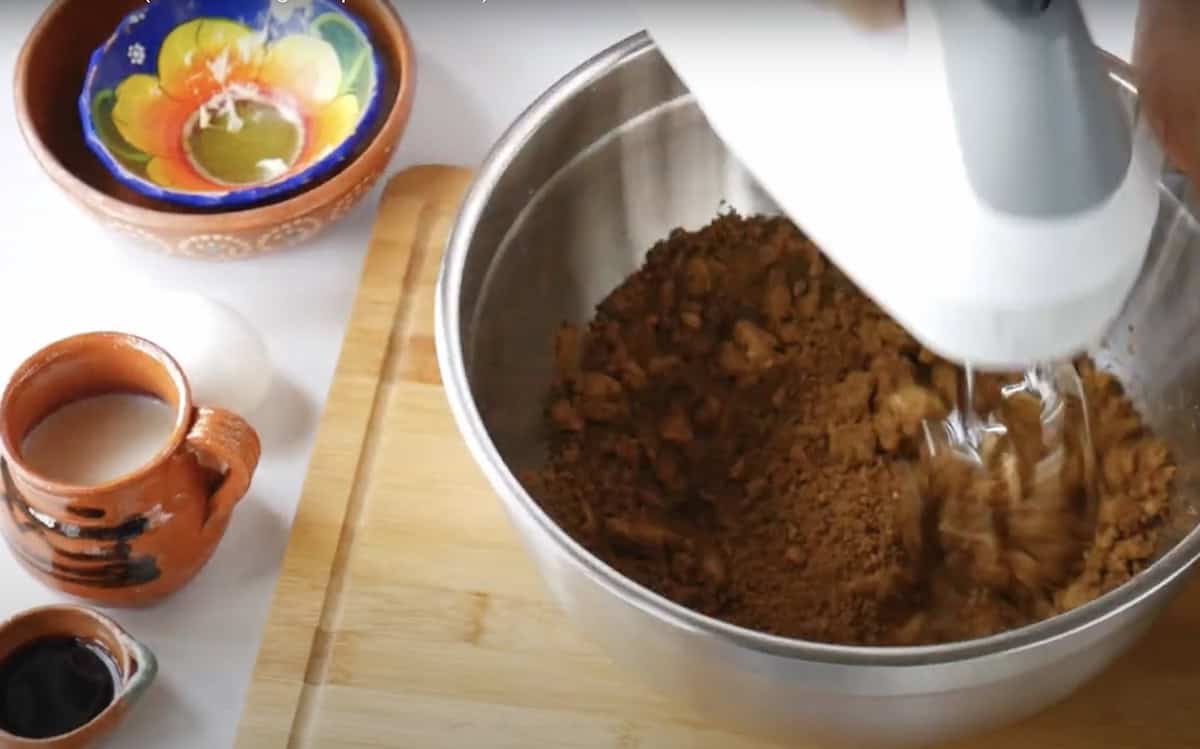
Step 2: Wet Ingredients. Add the egg, milk, and vanilla bean paste and beat again until smooth. Add baking soda, cinnamon, ginger, molasses, and honey. Beat until well combined.
Step 3: Add Flour. Gradually add remaining flour, switching from mixer to a wooden spoon once the dough starts to become too stiff (so that you don’t burn out your mixer). The dough will seem a bit crumbly, but once you’ve stirred in as much of the flour as you can, use your hands to quickly knead in the rest of the flour. You’re looking for a dough that you’re able to roll out.

Step 4: Chill Dough. Lay a sheet of plastic wrap on the counter and turn the dough out onto it. Pull the dough together into a large disc and wrap in plastic. Refrigerate for at least 1 hour.
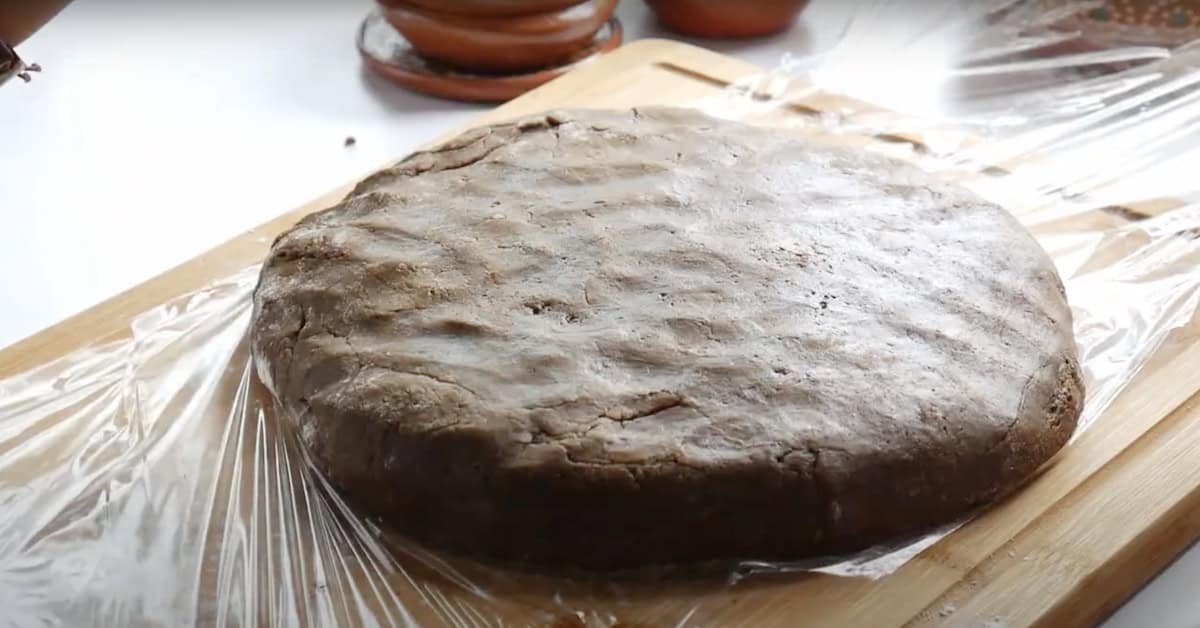
Step 5: Roll & Cut. Preheat the oven to 350°F and line a couple of sheet trays with parchment paper or a Silpat. Cut dough in half and wrap one halfback in plastic wrap, set aside (or refrigerate for now). With a palote (Mexican rolling pin), roll another half of dough out on a lightly floured surface to about ¼” thickness. Use a large pig-shaped cookie cutter (dip in a bit of flour) to cut out pig-shaped cookies. Place on the prepared baking sheet. Re-roll dough and repeat. Repeat with the remaining dough when ready.

Step 6: Egg Wash. Brush a thin coat of the beaten egg over the dough before you put it into the oven—this will give your pan dulce puerquitos a beautiful shine.
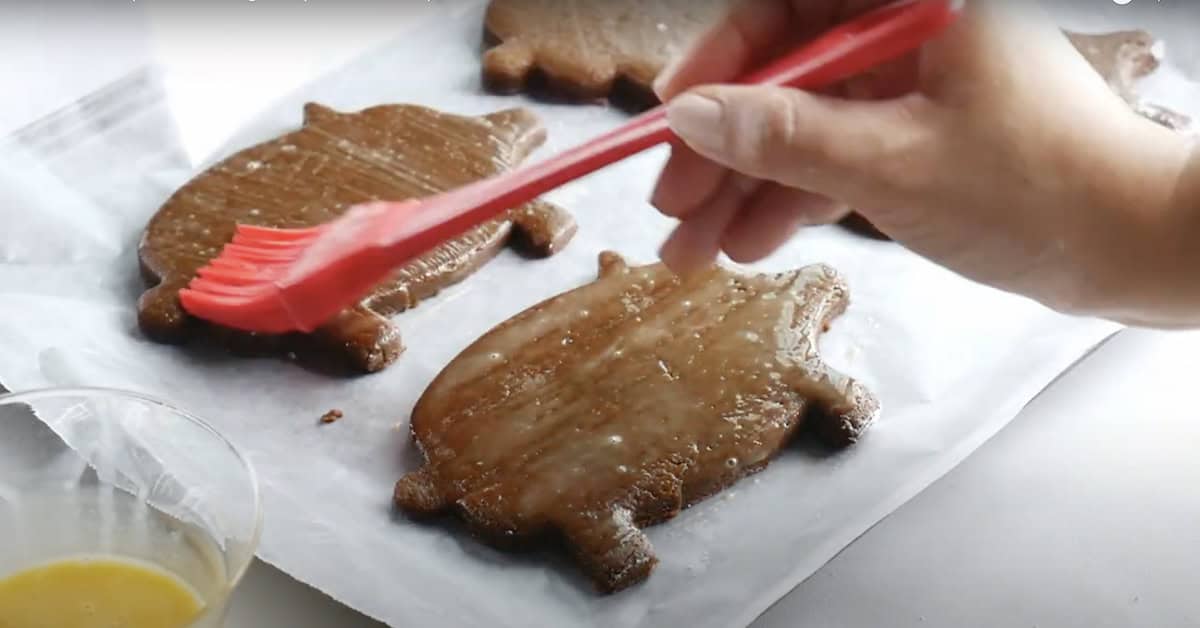
Step 7: Bake & Cool. Slide into a preheated oven and bake in the middle rack for 10 to 15 minutes or until cookies just start to turn golden around the edges and are just cooked through. Remove from the oven and place on a cooling rack. For storage, cover them with a clean, lightweight dishcloth to keep them soft.
More of a visual learner? Watch this video of me making marranitos to see how simple and fun it is!

Optional Variations
This marranitos recipe has not been tested with all of these substitutions or variations. If you replace or add any ingredients, please let us know how it turned out in the comments below!
- Other Shapes – While making a pan dulce pig is traditional, feel free to use whichever cookie cutters you happen to have on hand.
- Dairy-Free – Use shortening or vegan butter and the plant-based milk of your choice.
Serving Suggestions
A pig pan dulce alongside a hot cup of café de olla or chocolate-y champurrado is the best during the holidays. They’re also excellent whenever you’re in need of a Mexican dessert!
As I mentioned earlier, I always make a batch for Dia de los Muertos celebrations to honor my abuela. They’re also a family favorite for Christmas alongside other traditional Mexican cookies and pan dulces like Pan de Muerto, homemade conchas, authentic buñuelos, orange biscochos, and polvorones (Mexican wedding cookies).

Expert Tips & Tricks
- Gradually Add Flour. When baking at higher altitudes, you may need to use slightly less flour. The lower air pressure can cause baked goods to rise too quickly and then collapse, so reducing the flour helps balance the texture. Adjust gradually until you get the perfect result!
- Don’t Overwork It. I recommend switching to a wooden spoon or Danish dough whisk to add the last bits of flour so you don’t accidentally work the dough too much. (Overworking the dough increases gluten production, which can result in tough cookies.)
- Room Temp. Bring the egg and milk to room temperature before mixing the dough; this will help prevent the butter or shortening from seizing, which can make it harder to mix in all the dry ingredients.
Storage Instructions
- Allow the baked marranitos to cool completely to room temperature on the wire rack before storing, then separate them with sheets of waxed paper or parchment in an airtight container to prevent sticking.
- They’ll keep well at room temperature for up to 3 days.
- You can also freeze them for up to 3 months. I recommend wrapping them individually in plastic wrap before transferring to a freezer-safe container or freezer bag (preferred) with as much air removed as possible to ward off freezer burn.
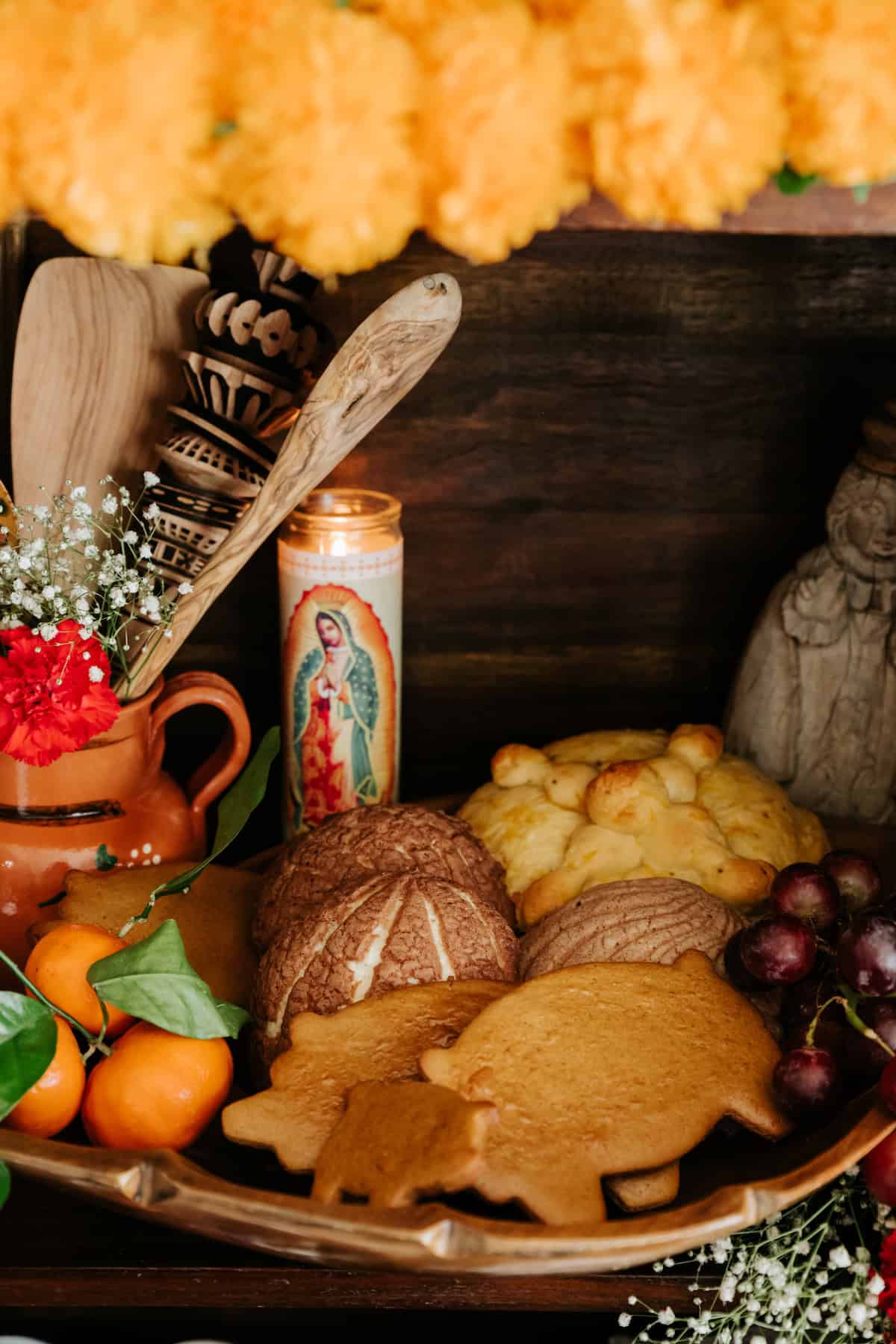
Frequently Asked Questions
Marranitos translates to “little pigs.” The other common names for these treats (e.g. cochinitos, puerquitos, and cerditos) also translate to “little pigs.
It’s all in the name! Since marranitos means “little pigs,” it makes sense that they’d be shaped like piggies. But why did the tradition start in the first place? The history of marranitos can be traced back to the 1500s, when Spaniards first introduced pork to Mexico. Mexican cooks began to incorporate the pig shape into their baking, both in line with the tradition of shaping pan dulce as well as to symbolize the cultural influence brought by their colonizers.
Traditionally speaking, the primary flavor of marranitos comes from molasses and piloncillo. While they are often referred to as “Mexican gingerbread,” not all recipes include the spice—the two dark sweeteners add a particular warmth on their own. Chocolate is also not part of the original recipe, though some modern cooks have incorporated cocoa powder to create chocolate marranitos. You can also dip them in chocolate if you like!
More Mexican Pan Dulce Recipes

Summarize & Save This Content On

Marranitos / Cochinitos / Puerquitos (Mexican Pig-Shaped Cookies)
Ingredients
- 1¼ cups packed grated piloncillo, or dark brown sugar
- ¼ cups butter or shortening, at room temperature
- 1 large egg, at room temperature
- ⅓ cup milk
- 1½ teaspoon vanilla bean paste or Mexican vanilla extract
- 1½ teaspoon baking soda
- 1½ teaspoon ground cinnamon
- 1 teaspoon ground ginger
- ¾ cup molasses
- ¼ cup honey
- 5 to 6 cups all-purpose flour, depending on altitude (see notes below)
To finish:
- 1 large egg, beaten
Instructions
- Beat piloncillo and butter together in a large bowl until combined (they won’t really cream together, just beat as best as you can). Add the egg, milk, and vanilla bean paste and beat again until smooth. Add baking soda, cinnamon, ginger, molasses, and honey. Beat until well combined.
- Beat in 3 cups of the flour. Gradually add remaining flour, switching from mixer to a wooden spoon once the dough starts to become too stiff (so that you don't burn out your mixer). The dough will seem a bit crumbly, but once you've stirred in as much of the flour as you can, use your hands to quickly knead in the rest of the flour. You're looking for a dough that you're able to roll out.
- Lay a sheet of plastic wrap on the counter and turn the dough out onto it. Pull the dough together into a large disc and wrap in plastic. Refrigerate for at least 1 hour.
- Preheat the oven to 350° F and line a couple of sheet trays with parchment paper or a Silpat.
- Cut dough in half and wrap one halfback in plastic wrap, set aside (or refrigerate for now). Roll another half of dough out on a lightly floured surface to about ¼" thickness. Use a large pig-shaped cookie cutter (dip in a bit of flour) to cut out pig-shaped cookies. Place on the prepared baking sheet. Re-roll dough and repeat. Repeat with another half of dough when ready.
- Brush a thin coat of the beaten egg over the dough before you put it into the oven.
- Slide into a preheated oven and bake in the middle rack for 10 to 15 minutes or until cookies just start to turn golden around the edges and are just cooked through.
- Remove from the oven and place on a cooling rack. For storage, cover them with a clean, lightweight dishcloth to keep them soft.
Video
Notes
- Gradually Add Flour. Keep in mind that altitude affects how much flour you’ll need. At higher altitudes, you may need less flour, while at lower altitudes, a little more might do the trick. Adjust gradually to get the perfect texture.
- Don’t Overwork It. I recommend switching to a wooden spoon or Danish dough whisk to add the last bits of flour so you don’t accidentally work the dough too much. (Overworking the dough increases gluten production, which can result in tough cookies.)
- Room Temp. Bring the egg and milk to room temperature before mixing the dough; this will help prevent the butter or shortening from seizing, which can make it harder to mix in all the dry ingredients.
- Use a piggy cookie cutter for this recipe.
- Allow the baked marranitos to cool completely to room temperature on the wire rack before storing, then separate them with sheets of waxed paper or parchment in an airtight container to prevent sticking.
- They’ll keep well at room temperature for up to 3 days.
- You can also freeze them for up to 3 months. I recommend wrapping them individually in plastic wrap before transferring to a freezer-safe container or freezer bag (preferred) with as much air removed as possible to ward off freezer burn.
Nutrition
Nutrition information is automatically calculated, so should only be used as an approximation.





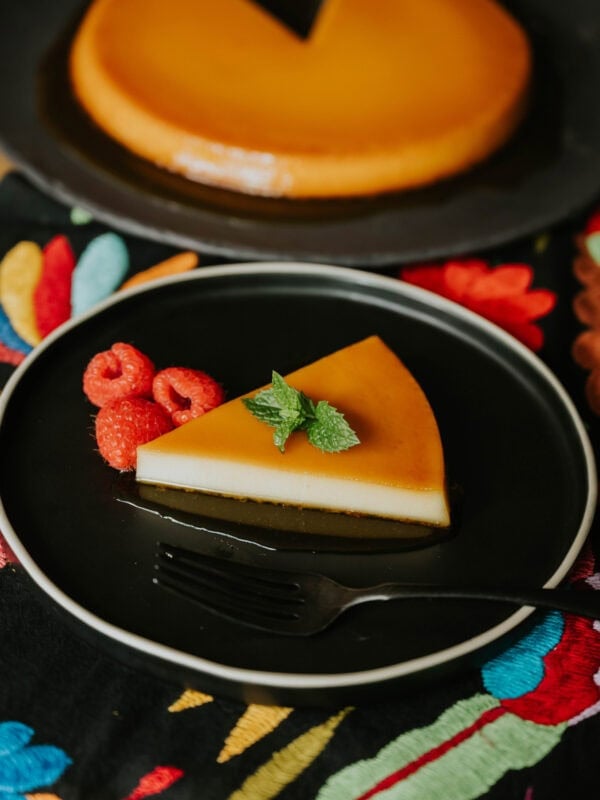











Do you have the recipe book available for sale?
Hi Mary, this recipe is available for free on the blog as well as my latest cookbook, Muy Bueno Fiestas. You can purchase the book on Amazon or wherever books are sold.
I have been using Yvette’s recipe for my puerquitos for years. My family and friends love them. My father has proclaimed them better than from the Panadería. I make a double batch and use the smallest piggy cookie cutter to make over 100 puerquitos. I take them to cookie exchanges and give out as gifts.